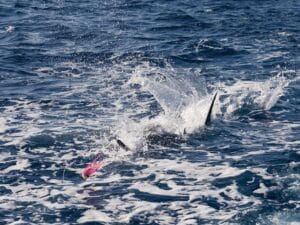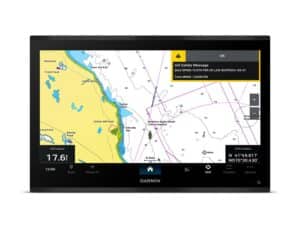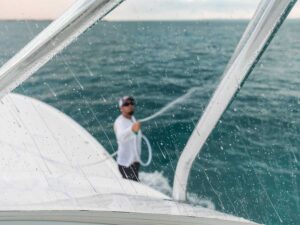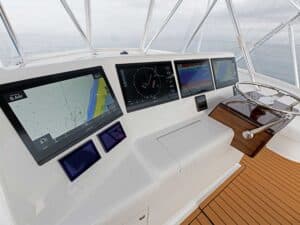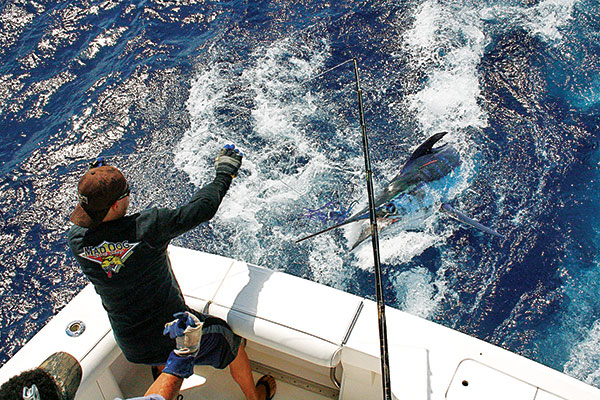
As captains and anglers, we spend countless hours in preparation for our day on the water. All of the phone calls, rigging, emails, and research become justified when we can look back on the day and say, “Today was a success.” The time and effort we put into achieving our goal rivals those of NFL coaches. But for us, the off-season does not exist. We can’t afford the luxury of a week between tests of our willpower and planning. Every day differs from the next in our sport. The barometer shifts, currents switch, baitballs scatter, moon phases change, water temperature breaks and, sometimes, our competition doesn’t even show up to play.
I have had long discussions with other captains about the value of consistency in our chosen profession. If we could employ a system that worked even 50 percent of the time, it would be considered the Holy Grail of techniques. Yet, the times I grow and learn the most as an angler and as a captain come when I leave my comfort zone and fish new waters sight unseen. The best captains in any fishery constantly fish new water. These individuals learn the rules of a new game each time they set their spread.
Seeking Consistency
Capt. David Shinn spent four decades at the helm targeting billfish. For the past 10 years, he has skippered the 80-foot Merritt Lady Columbo across the world. The most recent two-year voyage proved to be Capt. Shinn’s greatest challenge yet with an itinerary that included multiple marlin meccas in the South Pacific.
“The moment I learn of our next destination, I immediately break out the charts,” Shinn says. “Structure is key. I look for mountain peaks, walls or if there are any FADs in the area. Next, I look at the data available online for sea-surface temperatures and chlorophyll data, look for temperature breaks, and pinpoint conversion zones.”
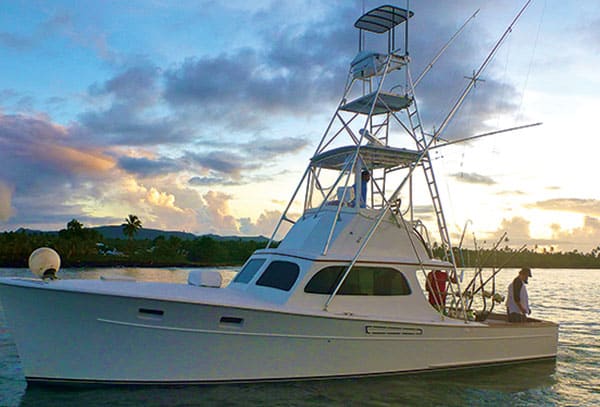
“I rely heavily on my electronics,” says Shinn. “The accuracy of Navionics chips these days allows us to pull up on the exact location of structure we found on the charts. As we raise marlin into the spread, I immediately mark each location on my plotter. If no fish show, we quickly move on to the next wall or peak.
“Regardless of where we went, we would fish four lures in the spread with two teasers and an occasional shotgun,” says Shinn. “If my plan doesn’t produce, I simply move. I know my spread will raise billfish … I just need to find them first. But just because all the factors I look for in ‘good water’ are present, doesn’t mean the fish agree.”
Local Knowledge Pays
“The locals are invaluable,” Shinn says. “The information [they provided] on simply where not to fish saved us days on the water. This allowed us to fish with confidence. You shouldn’t second-guess yourself throughout the day. Find the structure, find the bait, mark the bites on your electronics, and stick to the pattern. Don’t leave fish to find fish. They might not be there every day, but you’d better be there when they show!”
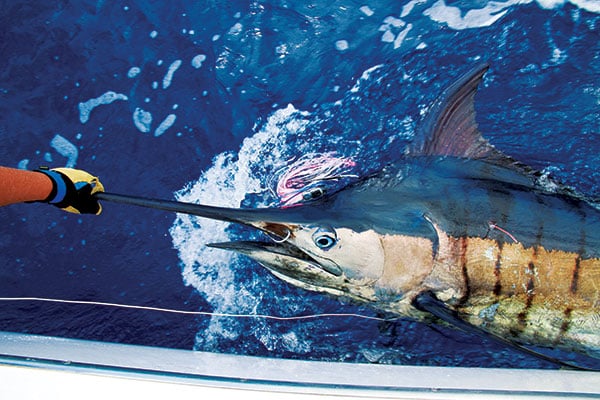
Capt. Chris Donato fished along the East Coast of the continental U.S. for many years before picking up and moving his operation to the South Pacific. In 2006, he arrived in Apia, Samoa, with very limited knowledge of the waters surrounding the island. In just a few short years, he has caught dozens of blue marlin in the 600-pound class, and even a grander tipping the scales at 1,025 pounds. “The information that truly helped me to become successful out of the gate came from local knowledge and the guidance from Jack Tullius at Black Bart Lures. Also, by hiring a solid local deckhand with years of experience, I was able to break down what waters would most likely be productive and what areas are not immediately worth my efforts.”
Have a Plan
Donato says you must have a definitive plan for exploring new water. “I look for a drastic rise in depth on the surrounding shelves that quickly change from around 1,000 fathoms to 1,000 feet,” he says. “Then I comb the charts looking for choke points, funnels or variations in the structure that should condense the bait. Try to envision what the changes in tidal currents will do to the bait’s location. Next, look to the tide tables to determine where you will start your day. Always fish on the eddy side of the structure initially.”
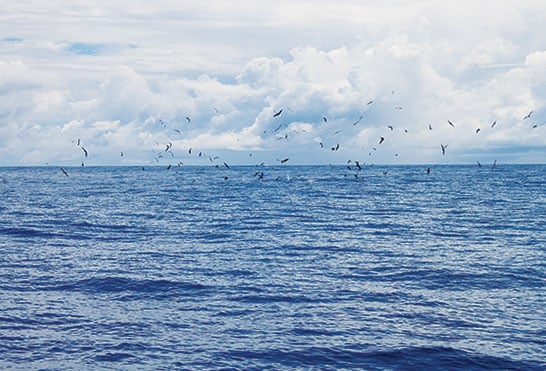
“I would start by pulling lures across the shallow side of the shelf as the current flushes bait over the edges, focusing my attention on those variations in the wall,” says Donato. “At each spot I raised a fish or found bait, I would mark it on my charts. I would continue on my track unless I raised multiple fish in a small area, in which case I would turn back on my tracks and pound that water. If no fish appear, I like to fish the wide edges of the baitballs, tacking up to 3 miles away and working my way back. If my sonar shows fish and I am just not getting any bites, I will slow down and bridle a bait to see if that will trigger a strike.
Fish Tight
Donato says tight patterns work best. “During the big tides, focus on areas that create tight choke points or gutters,” he says. “On the soft tides, look for structure along the walls that will stack the bait in any way. When trolling lures, I run two big teasers.
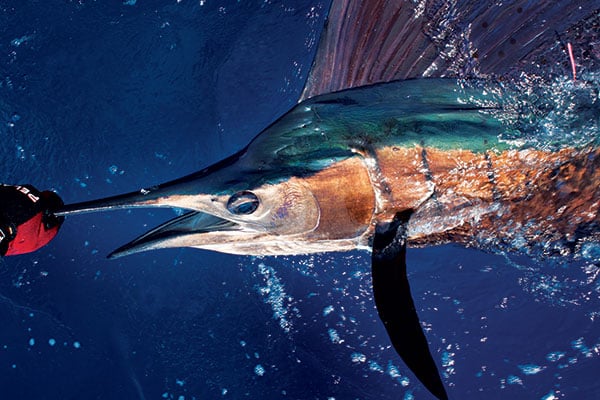
The shorts are large; the mids are average in size; longs and shotgun are smaller. This gives the fish several looks … one of them should raise ’em. As for color, I like darker colors on top with light colors underneath to create contrast. My best lure as of late has been an all-white Bomboy lure; it just gets bit. If a lure is bothering you in the spread, change it — it is more important to be confident in your presentation than it is to have the right lure out. Trust your instincts.”
Final Thoughts
First is location. If you are not near the fish, you will not get bites. Find significant changes in depth on your charts, and focus on the areas that will congregate bait. Be humble and ask the locals. Tackle shops, guides and weekend warriors can all provide a wealth of knowledge. But ask the right questions: Don’t ask what color or what bait — ask what type of structure and at what part of the tide.
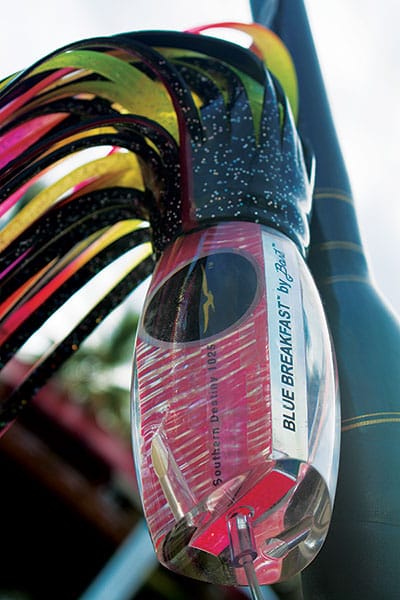
As for presentation, try to cover lots of water in new spots. If you want to win the lottery, you should buy as many tickets as you can afford. The same philosophy applies to marlin fishing. The more fish you get your lures in front of, the better your chances of getting bit. Be methodical when covering an area, and pay attention to your electronics. Change your gear only when necessary. You meticulously planned your spread. Trust your gut, and use whatever lures and baits give you confidence.
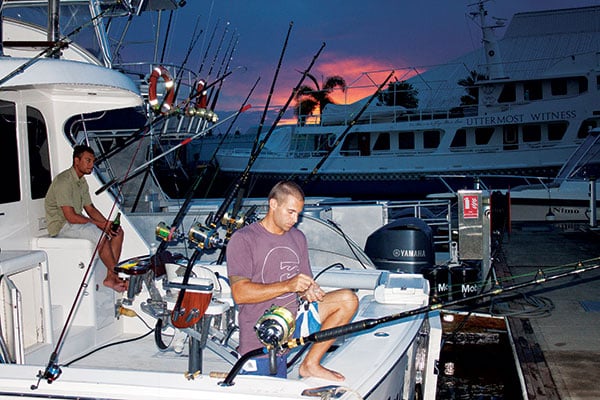
Last, adjust to conditions.
Just as no two fish are ever the same, no two days on the water are ever the same either. If you hook a fish on a black-and-purple lure on the right long during a starboard turn, do you know for certain that fish bit that lure because the color was perfect and the lure’s action changed from a seven-second to a four-second cycle? The answer will always be a resounding no. What if that right long was a different color or had a different head? Would that marlin still have bit? We will never know. We must assume that we can repeat whatever patterns emerge each day in an effort to raise more billfish and increase opportunity. Adjusting to conditions means being flexible. Any time I think I am taking too much gear, I remind myself of the analogy I often give in my seminars: “Can you play 18 holes of golf with a putter? Yes. But you will play a much better game with your complete bag of clubs.” Be prepared.
